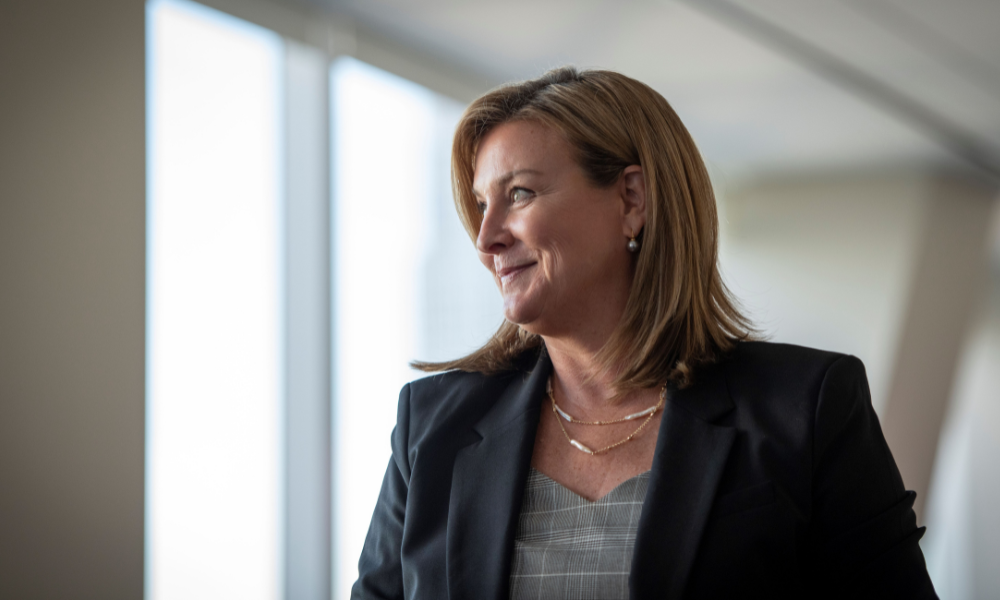
'Creating a network of support around a person is a big piece of helping with performance,' says Katy Conway

Katy Conway, chief people officer at RGP, understands that nurturing global talent isn’t merely a ‘nice to have benefit’ in today’s market – it’s a strategic necessity. Speaking to HRD, she explains that at RGP they’re hot on implementing new initiatives in order to bring remote and global teams together.
“Many companies right now are learning that they have skill gaps and shortages, and so they're trying to figure out how to bring talent together,” says Conway. “We did some original research on this which was really helpful – and we've learned quite a few things through it.”
RGP’s research showed that more organizations are blending internal talent with skilled outsiders and that leaders expect that balance to near a 50-50 split this year.
“Companies have learned that they don't have to own all the talent - so getting good at how to nurture manage, create cohesion and productivity from dynamic teams is a big deal,” she says.
A key success factor for RGP has been the intersection between employee experience and digital technology. Conway highlights their ongoing digital transformation, emphasizing the creation of a platform that fosters not only work-related information exchange but also a sense of community.
“We're created a platform because we have people in dynamic work teams that are distributed all over the country and the world,” she tells HRD. “We've created a digital platform where they can find each other, find information they need to serve their client, and also where they can meet the employee experience parts of their role; you can hop onto this digital platform and find one of our professional communities.”
I order to bridge that gap between geographically dispersed teams, RGP has launched its employee resource groups focused on building communities around shared interests and diverse areas where employees seek support and camaraderie.
"These groups are centered around creating community again, not around technical learning topics, but areas where employees are looking for support,” she explains. “[Such as] mindedness and new ideas – we have one around a multicultural group, one around interfaith, one around women and leadership.”
And Conway’s not alone in appreciating the power of a strong community. According to O.C. Tanner’s 2023 Global Culture Report, when a workplace has a strong sense of community the odds an employee will be like they belong improves by 785%. What’s more, 76% of employees consider their workplace a community and 72% say it’s important for them to feel a part of that community at work.
When it comes to enhancing employee performance, Conway underscores the importance of clarity and communication. Setting clear expectations, defining success factors, and implementing goal-setting mechanisms are integral components.
“Creating a network of support around a person is a big piece of helping with performance,” she tells HRD. “Starting with clarity of what is it we're trying to achieve and making sure we have mechanisms to create clear communication and clear expectations, objective success factors. That's been an integral part of how we deliver for our clients and even our employees who’re not directly supporting clients - just making sure people are clear on what their overall success factors are.”
Reflecting on RGP's recent foray into diversity, equity, and inclusion efforts, Conway describes a bottom-up approach. The company-initiated conversations with employees help RGP to understand what matters to them, fostering a values-based approach to DEI.
“We started by asking people what’s meaningful to hear? What's important to you? Let's have a really values based conversation as we create more formal programming. We were lucky in that before diversity, equity and inclusion was formalized as its own focus, there was a really important emphasis in this organization placed on wanting to support community. And so we organically grew up with [those] practices. One of the ways we came together since we’re working across a wide array of physical footprints and serving clients and other companies might be coalescing around a philanthropic or community support event.”
And with her teams spread across the world, a reliance on the best technology is paramount. The intersection of employee experience and technology, specifically in HR tech, is identified by Conway as a game-changer.
"I think all of those mechanisms, starting with that bottom-up approach, really make sure this is not just a check-the-box exercise but one that people find value and meaning in,” Conway says. “And we're trying to be quite thoughtful in how we engage in technology in that way. When I think about AI as an example, we’re trying to be pretty discerning about what the risks are with that. The data privacy, the bias, the ethical concerns, all of these pieces – and then once aware of them, they’re laid out against our own organizational objectives.
“Where did we think it could most serve us while being aware of the things that we need to mitigate and picking and choosing? That's been one of the interesting things to mitigate actually, from an HR [standpoint] - everybody wanting to play with a new shiny toy. {it’s about] making sure we're being thoughtful and prudent as we pursue that.”